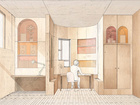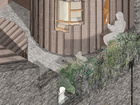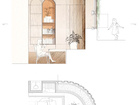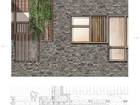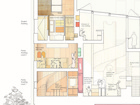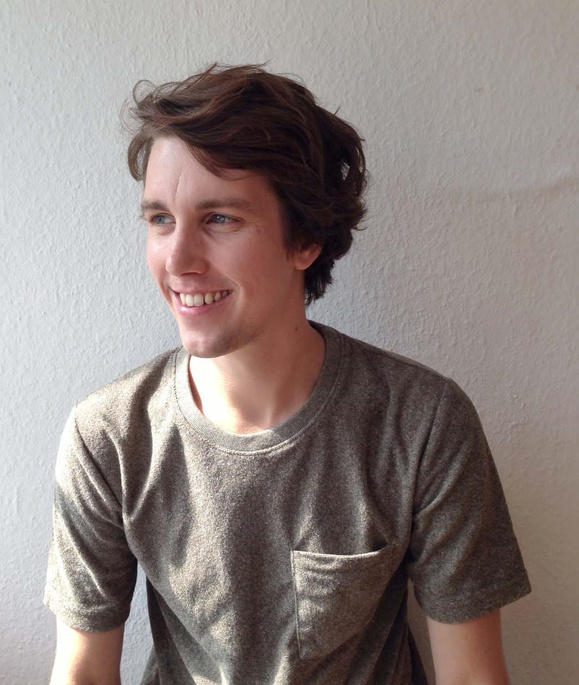In Copenhagen and similar metropolitan areas, the housing shortage is massive. For young people without a high income it can be hard to find a place to live - but it may also be that you are in the autumn of your life and do not feel like moving into a nursing home. Meet the architect, Tom Reynolds. In his final project, ‘Co-Living’, he created a new form of social housing, which not only forms a collective setting for the life of people of all ages, but also serves as a tool, which could potentially alleviate loneliness among residents.
What is your final project about?
I have created a new form of multi-generational social housing in Copenhagen North West. The project is based on sense of community and happiness, which people of all ages and of different backgrounds can gain from living together. The project comprises large communal areas and smaller, more intimate houses than are normally a feature of social housing, with the specific aim of encouraging a sense of community throughout. My proposal for multi-generational housing differs from other housing of this type, because it sets out to accommodate a more diverse group of residents: students, young people in work and elderly people. The aim is to create a vibrant environment with a more representative demographic composition.
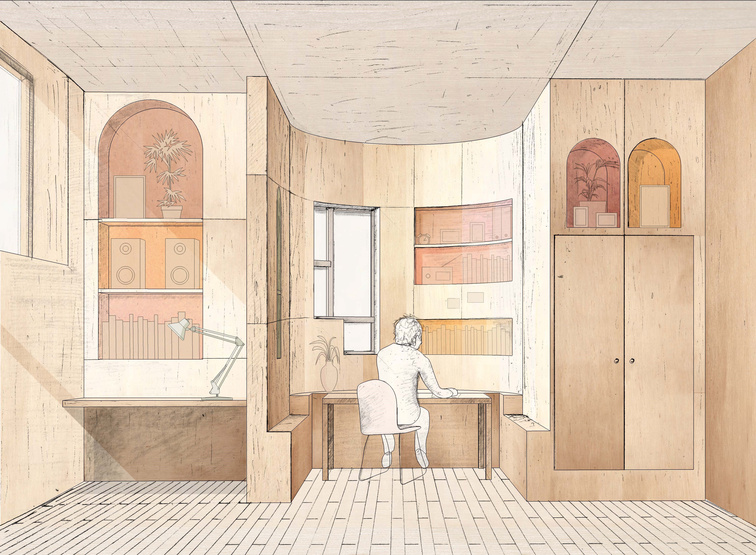
What was your motivation for this project in particular?
Copenhagen has many collective housing complexes, but there is also a huge housing shortage, which affects people of all ages.
I know from my own experience how students struggle to find a home they can afford. And the waiting time for a council flat in the North West district can be up to 20 years, which makes it hard for families with children, for instance, to find a suitable, centrally located home. At the other end of the age spectrum, the older section of the population lacks options when it comes to housing. There are a number of older people who neither wish to move into an old people’s home nor to live alone in an assisted care flat. Loneliness is a widespread problem. About 33,000 older people experience loneliness in their everyday lives. So my main motivation was to create some homes, which everyone can feel comfortable in, and which potentially can help to alleviate problems such as loneliness.
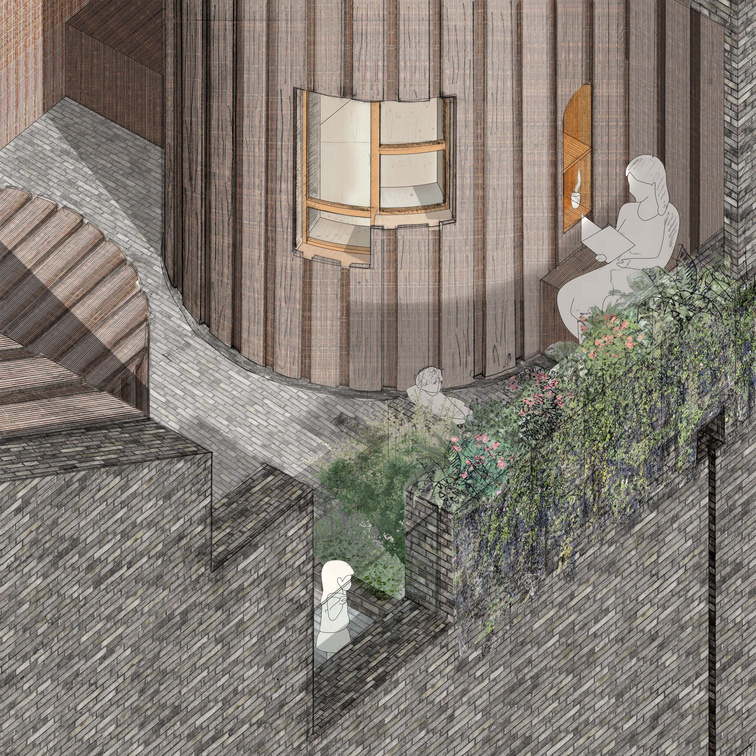
Where do you imagine your degree project will make a difference?
As far as I can see, communal housing and collectives represent a growing trend. If you are going to be able to afford to stay centrally in cities, collectives are often the only option. But there are not many examples of this trend being translated into new architecture. I hope my project will help create debate about how we will design buildings for both private and collective housing in the future.
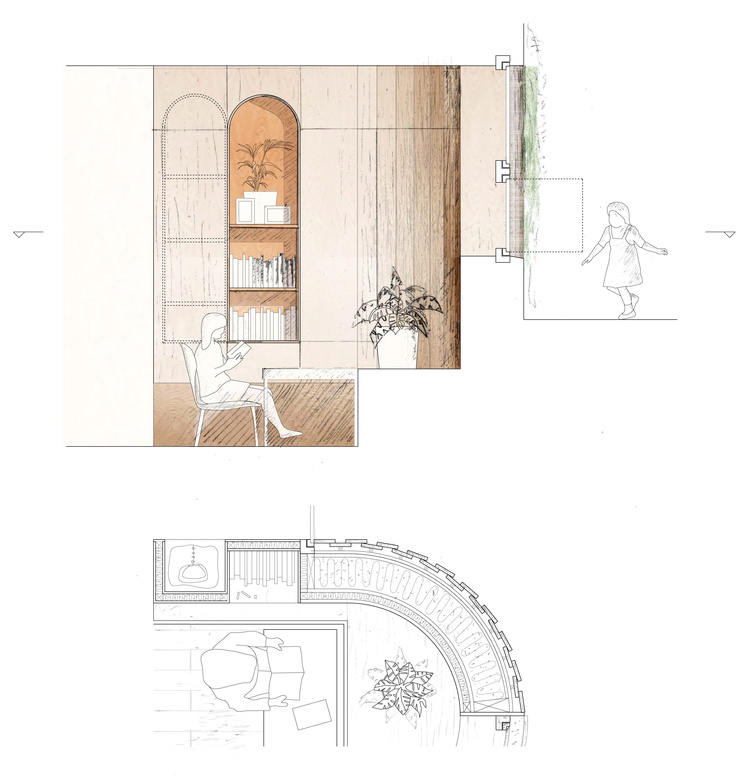
What methods did you use when working on your project?
I visited my ‘building site’ on a regular basis from winter to summer and talked with local residents to get a sense of how the area functions on a daily basis. I also talked to the local residents’ association to learn more about some of their challenges, most of which related to accessibility and about the possibility of being undisturbed in the district as a whole.
But actually I learned most by sitting in the yard for a few hours, watching people and observing the way they made use of the space. I documented this with sketches and photographs. I noted what people got up to, where they went, were they sat and when. I also noted the position of the sunlight in the site throughout the year, when people opened their windows etc. I used all this information in the design.
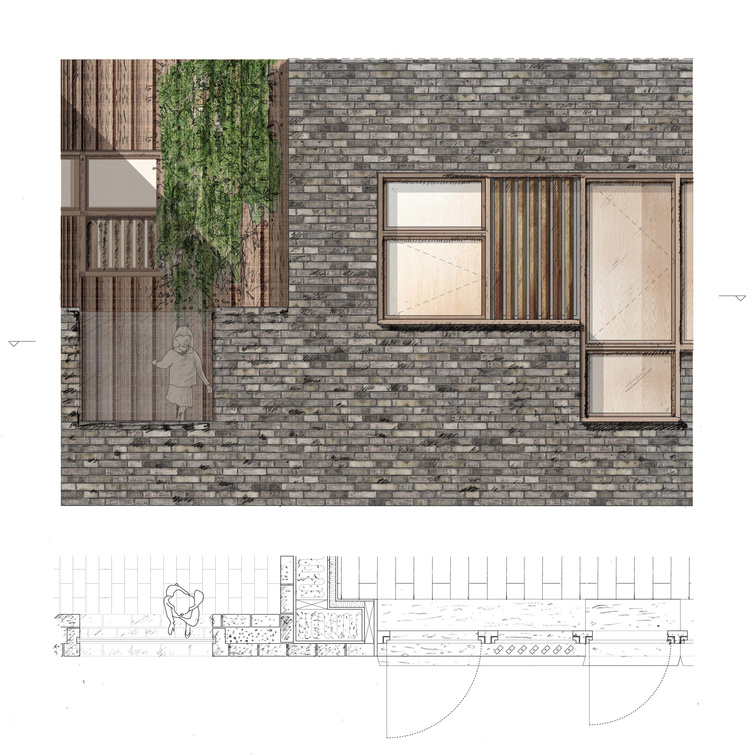
To which UN goals does your project relate?
The North West district is one of the most multicultural areas in Denmark. Residents come from every corner of the world. That makes it a very appropriate place to build homes for multiple generations. Many of the residents have neither parents nor grandparents in Denmark, so will benefit from living together with older or younger role models. I am convinced that bringing people of all ages together can potentially contribute to achieving the UN global goal of less inequality. -
A residential development based on common economy and common culture can also help to achieve the UN goal of responsible consumption and production: a communal kitchen instead of one kitchen per home will reduce the number of kitchen appliances that have to be manufactured.
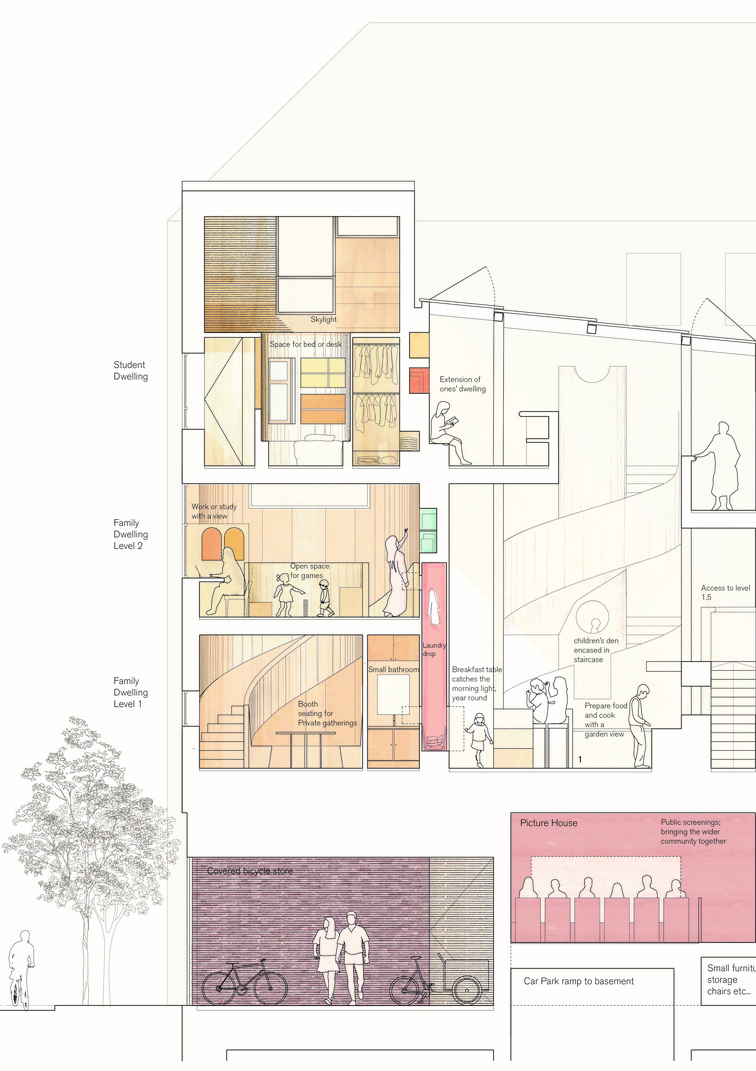
What are the most enjoyable and the most difficult aspects of designing the way you do?
I like designing details in rooms and thinking about how these rooms and the furniture in them will be interpreted and used by people of different ages and with different abilities. I do this at the same time as sketching and building scale models. My goal is to design spaces that will make people’s everyday lives a little easier and more enjoyable. When designing for everyone’s needs and abilities, sometimes you have to make compromises in your design. For instance, it might be practical for older people to have low-hanging shelves, but impractical for younger people. I now think that the greatest challenge of designing for everyone lies in making room for flexibility and change: for example, when the children in a family grow up or move out. It is almost impossible to foresee all situations and take them into account in one’s design.
Can you see any development/employment opportunities in your degree project?
I regard my degree project as work in progress rather than a finished project, and I will use some of the best and most agreeable ideas and concepts in my next project, so I can design even better housing for a collective lifestyle.
What do you think is your greatest strength as a KADK design graduate?
There is no doubt that I have developed my architectural thinking, since I started at KADK. In particular, I have become more critical in terms of how architecture can and cannot solve social problems. The Academy’s comprehensive facilities also helped me to discover new things, and to experiment and learn new skills in the context of design and production. Having extensive facilities and the ability to work with materials like ceramics, glass and metal enabled me to come up with new methods of presentation and production.


